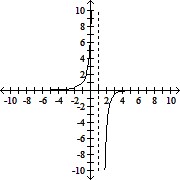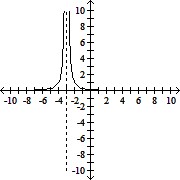Graph the function, showing all asymptotes (those that do not correspond to an axis) as dashed lines. List the x- and y-intercepts.f(x) = 

A. x-intercept: (3, 0) , y-intercept:  ;
;
B. x-intercept: (7, 0) , y-intercept:  ;
;
C. x-intercept: (-3, 0) , y-intercept:  ;
;
D. x-intercept: (0, 0) , y-intercept: (0, 0) ;
Answer: A
You might also like to view...
Solve the problem.If p > 0 and q > 1, what can be said about the convergence of  ?
?
A. May converge or diverge B. Always converges C. Always diverges
For what values of x does the series converge absolutely?
A. 1 < x < 3 B. 1 < x ? 3 C. 1 ? x ? 3 D. 1 ? x < 3
An experiment consists of selecting a card from a standard deck of playing cards and noting whether the card is black (B) or red (R). What are the events of this experiment? ?
A. {B, R}, {R, B} B. {Ø}, {B}, {R} C. {B}, {R}, {B, B}, {R, R} D. {Ø}, {B}, {R}, {B, R} E. {Ø}, {B, R}, {R, B}, {R, R}, {B, B}
Evaluate the surface integral of the function g over the surface S.G(x,y,z) = x2 + y2 + z2; S is the surface of the cube formed from the coordinate planes and the planes 
 and
and 
A. 80
B. 
C. 112
D. 